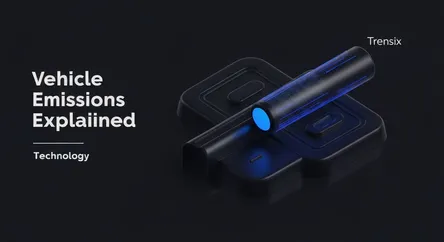Technology
Vehicle Emissions Standards Explained

Discover what vehicle emissions standards are, why new regulations are trending, and how they impact air quality, car prices, and the auto industry.
What is it?
Emissions standards are government regulations limiting the pollutants released by vehicle engines. Set by agencies like the U.S. EPA or under Europe's "Euro" standards, they cap harmful outputs like nitrogen oxides (NOx) and particulate matter. To comply, automakers integrate technologies like catalytic converters and particulate filters. The ultimate goal is to reduce air pollution and protect public health.
Why is it trending?
The topic is trending due to the rollout of stricter global regulations, such as the upcoming Euro 7 standard. These new rules demand significant reductions in pollutants and, for the first time, address non-exhaust particles from brakes and tires. This regulatory pressure is a major catalyst for the auto industry's rapid shift toward electric vehicles (EVs) as the most effective long-term solution for compliance.
How does it affect people?
These standards impact everyone. Consumers may see higher new car prices due to the required technology, but the collective benefit is cleaner air and improved public health. For automakers, it drives innovation in engine efficiency and electrification. It also affects the used car market, as older vehicles may face restrictions in low-emission zones, accelerating the transition to cleaner transportation.